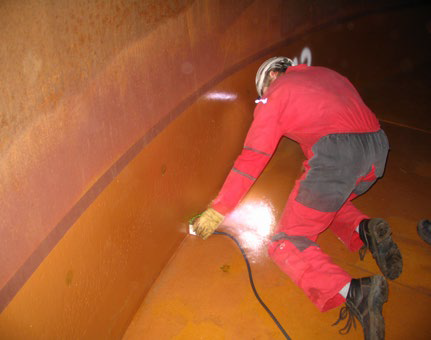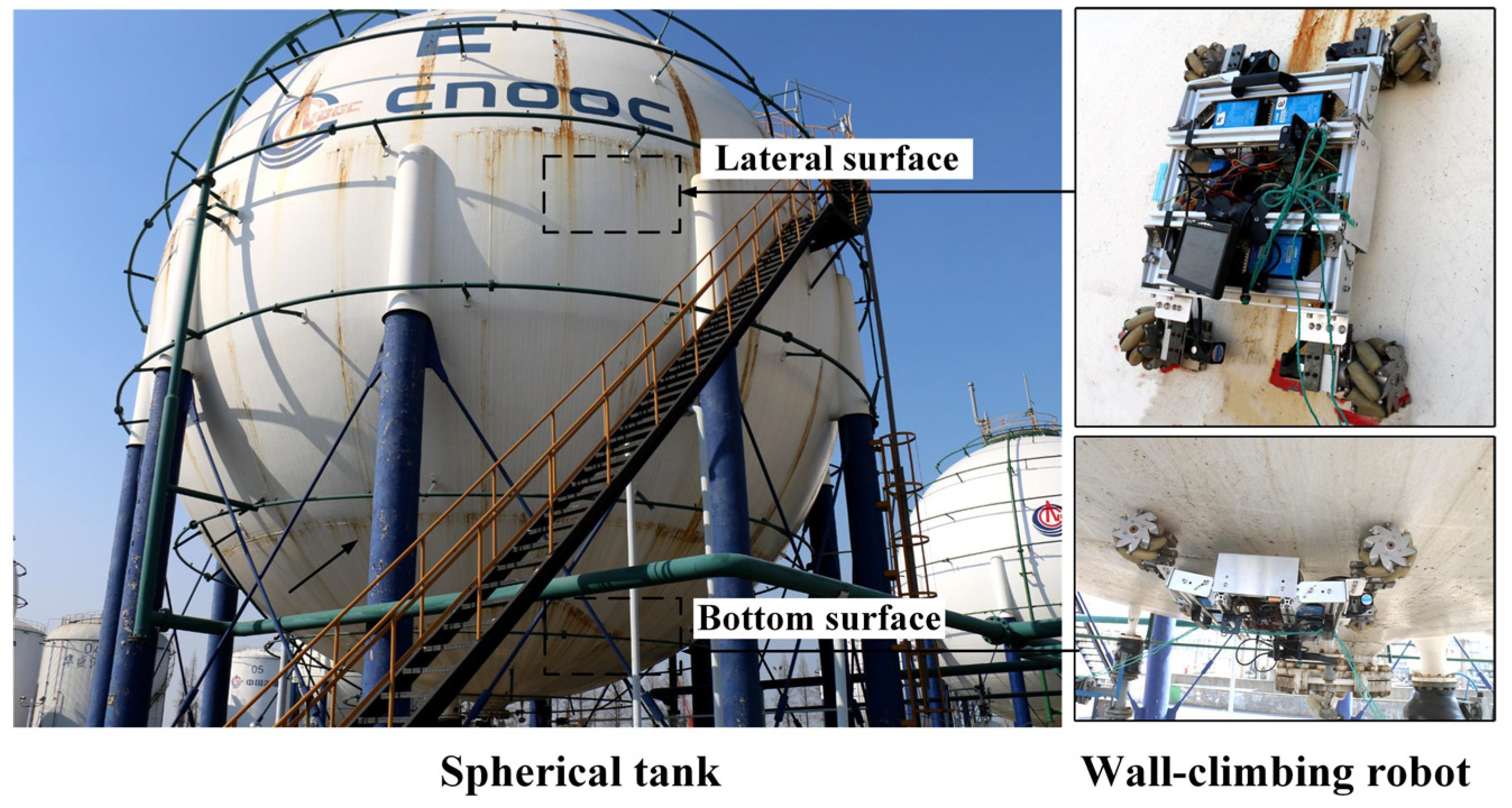
Recognizing the Significance of Rigorous Storage Tank Welding Examination Processes in Preventing Failings and Enhancing Lifespan
In the world of industrial operations, the importance of strenuous storage tank welding assessment procedures can not be overstated. By carrying out various examination techniques, organizations can spot problems early, therefore avoiding expensive effects and extending the life of their storage containers.
Relevance of Welding Assessments
Acknowledging the essential function of welding evaluations in maintaining architectural stability, these processes guarantee that welds satisfy established criteria and requirements - Tank Welding Inspection. Effective welding examinations are paramount in the construction and maintenance of containers, as they directly affect the durability and safety of the structures. By identifying potential shortages, such as inappropriate techniques or product flaws, assessments mitigate the risk of disastrous failures
Welding examinations incorporate numerous techniques, consisting of aesthetic exams, non-destructive screening (NDT), and assessments of welding procedures. Each method offers to confirm the quality and compliance of welds with market laws, thus securing both personnel and environmental rate of interests. Moreover, routine inspections foster a society of accountability and quality within the workforce, guaranteeing that all staff member follow best methods.
In addition, these assessments add to the general lifecycle monitoring of containers by identifying wear or deterioration early at the same time. By addressing these problems proactively, organizations can expand the functional life expectancy of their possessions, ultimately leading to cost financial savings and enhanced integrity. In summary, the significance of welding assessments can not be overstated; they are necessary for making sure security, long life, and compliance in storage tank building and maintenance.
Usual Reasons For Tank Failures
Comprehending the typical sources of container failings is vital for avoiding catastrophic events and guaranteeing the longevity of storage space systems. One prevalent reason of tank failure is deterioration, which can dramatically damage the architectural honesty of containers with time. Environmental elements, such as exposure to wetness, chemicals, and temperature variations, can accelerate this procedure.
Another crucial element is incorrect welding strategies, which might result in flaws like cracks or insufficient joints. These issues can compromise the storage tank's toughness and result in leakages or tears. In addition, inadequate upkeep techniques can result in unseen deterioration, eventually raising the risk of failing.
Layout defects, consisting of poor density or inadequate product choice, can likewise contribute to tank vulnerabilities. Operational factors, such as overfilling or exposure to severe pressures, can strain the tank past its desired limits.
Trick Inspection Techniques
Efficient evaluation techniques play an essential role in reducing the risks related to storage tank failures. A detailed method to container welding assessment involves numerous essential techniques, each developed to identify potential problems and make certain structural stability.
Visual inspection stays the initial line of defense, allowing assessors to recognize surface area anomalies such as splits, corrosion, or imbalance. This method is frequently supplemented by non-destructive testing (NDT) methods, which are necessary for assessing weld high quality without endangering the container's stability.

Moreover, have a peek at these guys magnetic bit testing (MPT) and dye penetrant testing (DPT) work for detecting surface area problems in ferromagnetic materials and non-porous surfaces, specifically. Each method has its strengths and constraints; consequently, a combination of approaches is often used to attain extensive inspection results.
Advantages of Strenuous Assessments
While the immediate costs of extensive examinations may appear difficult, the lasting benefits substantially surpass these initial financial investments. Implementing detailed inspection refines not only improves the honesty and safety of tank structures however additionally lessens the risk of catastrophic failures that can result in substantial financial losses and environmental harm.
Strenuous assessments help determine potential issues early in the welding process, permitting timely restorative activities that stop pricey fixings or substitutes down the line. This aggressive method promotes a culture of quality control, where adherence to finest methods becomes ingrained in operational procedures. Furthermore, regular examinations add to enhanced asset durability, as they guarantee that tanks stay in ideal condition throughout their lifespan.
In addition, the documentation created from these inspections acts as a beneficial resource for maintenance planning and performance analyses. This data-driven method can likewise enhance operational efficiency, causing reduced downtime and boosted productivity. Ultimately, rigorous inspections not only safeguard the architectural stability of storage tanks but also provide significant economic advantages, strengthening the notion that purchasing top quality guarantee is a sensible decision for any company included in container procedures.
Regulatory Standards and Conformity
Regulative standards and conformity are necessary elements of tank welding examination processes, as they develop the structure for ensuring safety and security and high quality in operations. Conformity with these standards not just reduces threats however also improves the overall stability of welded frameworks. Various companies, including the American Culture of Mechanical Engineers (ASME) and the American Oil Institute (API), provide guidelines that dictate appropriate methods for welding, examination, and testing.
These requirements mandate using qualified personnel, the execution of rigorous assessment protocols, and adherence to certain welding treatments. By aligning with governing requirements, companies can guarantee that their storage tanks meet the needed safety and security and efficiency standards, therefore lowering the likelihood of tragic failings that can result in substantial financial losses and ecological damage.

Additionally, regulatory compliance promotes go to my site a culture of accountability and continuous enhancement within the welding and construction fields (Tank Welding Inspection). Regular audits and evaluations make sure that methods continue to be straightened with evolving standards, thus promoting long-lasting dependability and functional effectiveness. Inevitably, adherence to governing criteria not only secures assets however likewise improves the life expectancy of welded storage tanks, ensuring they serve their intended purpose effectively over time
Conclusion
To conclude, rigorous tank welding inspection procedures play an essential duty in have a peek here protecting against failings and expanding the life expectancy of storage structures. By identifying possible shortages through various inspection strategies, companies can alleviate dangers related to tank honesty. The execution of these assessments fosters a culture of quality control, resulting in boosted asset durability, lowered upkeep expenses, and boosted functional efficiency. Sticking to regulative standards further emphasizes the significance of these evaluations in preserving safety and security and integrity within the market.